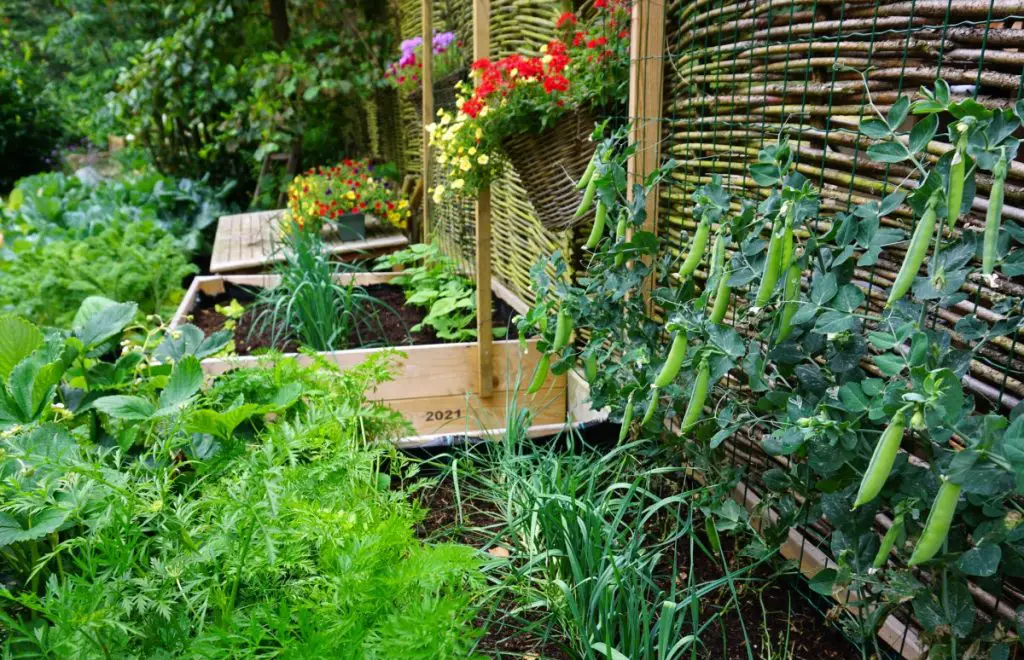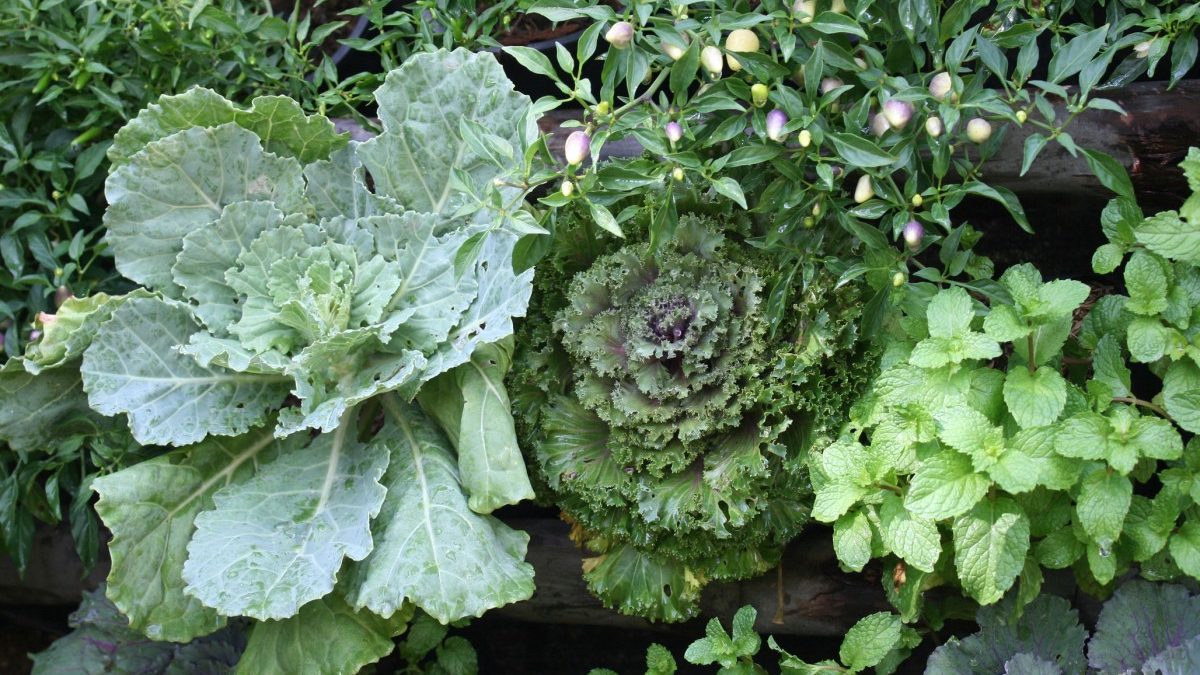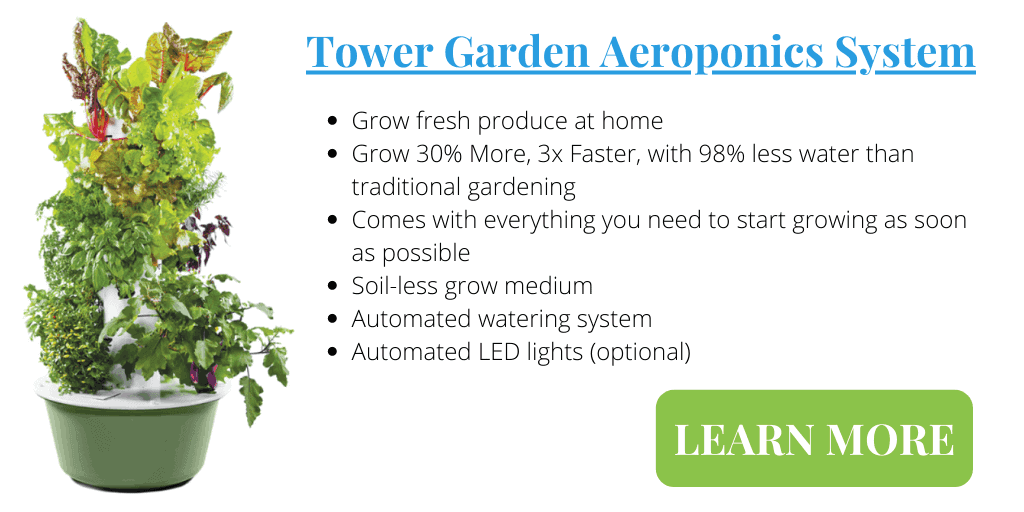A vertical garden is an easy way to grow more plants in a small space. As with any garden, the direction your vertical garden faces is important for your plants to grow well. Too much or too little sunlight can have adverse effects on your plants preventing them from reaching their full potential.
Vertical gardens that need a lot of sunlight will benefit from a south-facing direction when you are in the northern hemisphere. Plants that require shade will do better when facing the north. Allow enough space between vertical garden beds for light penetration and movement.
Vertical gardens are stacking racks, towers, or shelves that hold plants or vegetables, and optimum growth depends on the direction it faces. The direction your vertical garden faces can influence the success of the plants, making it crucial to understand the best orientation of your vertical garden for the type of plants you are growing.

Is It Better To Have A South Facing Vertical Garden?
A south-facing vertical garden provides the plants with an entire day of sunlight which is perfect for plants that need full sun. A north-facing vertical garden would be better for plants that need less direct sunlight in the summer months.
It’s important to understand the solar requirements of the plants before deciding where they’ll go. Most garden vegetables need full sun, which means six or more hours in direct sunlight every day.
Plants that thrive in partial sun/shade only require three to four hours of direct sunshine per day, while those that thrive in the shade need two hours. Grouping plants with similar light requirements in the garden is best for optimal plant growth.
My favorite vertical garden is the Tower Garden. One feature I love is that I can have plants with different sun requirements all in one place. Some plants will be shaded by the tower while others can have all the sun they want. Learn more about the Tower Garden in my article, What is a Tower Garden.
The Difference Between Light Intensity From Different Directions.
The most intense light comes from southern exposures. Eastern and western exposures receive roughly 60% of the intensity of southern exposures, whereas northern exposures receive only 20%. The southern exposure is the warmest and most intense direct sunlight, followed by the eastern and western ones, which are both cooler, and the northern ones, the coolest.
Plants that Grow Well in a South Facing Vertical Garden
As I mentioned, south-facing vertical gardens will get lots of sun, especially in the summer months (in the northern hemisphere). This direction will get the highest intensity from the sun and is best for plants that like full sun, i.e. 6 or more hours of sunlight per day.
Picking plants that are sun loving is key to a successful south-facing vertical garden, that, and ensuring it gets plenty of water. Most vegetables love full sun. Some of my favorite vegetables to grow in full sun are:
- tomatoes
- peppers
- eggplant
- cucumber
- squash – crook neck squash work in a vertical garden.
- strawberries
Plants that Grow Well in a East Facing Vertical Garden
An east-facing vertical garden will still get a lot of sun. The sun will be less intense but it will likely still get 6 or more hours of sunshine in the summer months. This garden will get morning sun and afternoon shade.
An east facing vertical garden will let you have plants that need sun but don’t like to get too hot. Some of my favorite plants for this direction can be full sun or partial sun.
- leafy greens
- basil
- tomatos
- peppers
- spinach
- broccoli
- cauliflower
Plants that Grow Well in a West Facing Vertical Garden
A west-facing vertical garden will get a lot of hot, intense afternoon sun. It will likely get 6 or more hours of sunshine just like east facing gardens. Picking plants that are either full sun or partial sun will work well in a west facing vertical garden.
Since a west-facing vertical garden will be getting the afternoon sun you will also want to select plants that are heat tolerant. Leafy greens, spinach, broccoli, and cauliflower will not do well in a western garden unless given some extra shade. My favorite plants for a west facing vertical garden are the same as for a south facing garden:
- tomatoes
- peppers
- eggplant
- cucumber
- squash – crook neck squash work in a vertical garden.
- strawberries
Plants that Grow Well in a North Facing Vertical Garden
A north-facing vertical garden can be a little tricky depending on how much sunlight your garden receives. A northern garden needs to have at 2-3 hours of sunlight for most plants to thrive. Otherwise, you will be stuck with mostly ferns.
A north-facing vertical garden will do well with full shade plants. Some might even be able to support partial shade plants depending on how much shade the area receives. My favorite plants for a northern vertical garden are:
- leafy greens
- arrugual
- kale
- oregano
- mint

What Is A Wall Microclimate?
A vertical green wall has a climatic gradient known as a wall microclimate. Basically, there will be differences in the vertical garden’s climate based upon the location on the vertical garden. It can vary from wall to wall depending on the surrounding elements and the direction it faces.
A wall’s microclimate is incredibly complex and differs when the facing direction changes. The microclimate may range from hot and dry to somewhat cold and moist.
Higher solar exposure (depending on the shadows cast by neighboring structures) and high wind are common near the top of the wall or vertical garden. When these two elements are combined, a vertical garden’s moisture level is usually reduced.
There is often more shade and lower wind speeds near the bottom of a north-facing wall (due to nearby buildings), increasing moisture. Water will get collected at the bottom of the vertical garden, increasing the moisture levels.
Final Thoughts
When living in the northern hemisphere, a south-facing vertical garden will probably be the best option because your garden will get the most sunlight throughout the day. The plants get layered one on top of the other in various patterns and configurations. To optimize sunshine for each plant, consider the different sunlight requirements when planning the vertical garden.

